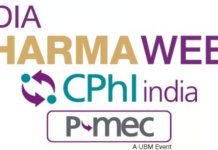Raw water treatment in pharma companies assume a very important role in maintaining standards that are so very stringent. Apart from the common contamination such as coliforms, streptococcus speceis, one very major contamination that Phama industry dread is the contamination by pseudomonas speciecs. Strains of Pseudomonas aeruginosa are often seen to survive chlorination on three out of seven occasions.These strains have also been noted to be resistant to almost all the antibiotics tested. The chlorine-resistant bacteria has mucoid colonies and grow well at water temperature 24 degrees Cel, A very high dose of chlorine with a contact time of more than 30 minutes is required to kill even the non resistant strains of Psedomonus
Pseudomonus:
P. aeruginosa is an opportunistic pathogen that is known to cause urinary tract infections, respiratory ,system infections, dermatitis, soft tissue infections,bacteremia, and a variety of systemic infections, particularly in patients with severe burns, and in cancer It is aGram-negative,aerobic,coccobacillusbacterium withunipolar and motile . Although classified as an aerobic organism,. Pseudomonas is a family of bacteria and within the group, there are several sub species that are found in soil and ground water. Pseudomonas aeruginosa was the most resistant. P. aeruginosa is considered by many as a facultative anaerobe, as it is well adapted to proliferate in conditions of partial or total oxygen depletion. These bacteria are often found in carbon filters, cooling towers, drinking water dispensers, bottled water, and swimming pools
Pseudomonas aeruginosa has become an important cause of infection, especially in patients with compromised host defense mechanisms. It is the most common pathogen isolated from patients who have been hospitalized longer than 1 week, and it is a frequent cause of nosocomial infections. Pseudomonal infections are complicated and can be life-threatening
If chlorine is resistant than what is the alternative? Ozone the savior
It is no as if chlorine is totally ineffective , but because the percentage is not 100% , it is very unlikely that Phrama industry would take this risk. . The most viable alternative that provide risk free treatment is ozone . Ozone has been successfully use.d in combacting this menace in the phrama industry
The properties of ozone are well known. However some of its properties are most suited for the Phrama Industry. What are these properties so sort after by the Pharma Industry.
Lets us list some important aspects considered by the Industry;
1) You need a very powerful oxidizing agent that will be effective against most pathogenic species .That is to say like an Broad spectrum Anti biotic, the oxidizing agent must be a BROAD SPECTRUM agent , effective against Bacteria, Viruses strains, Unicelluar organisms and at the same time oxidize unwanted organic compounds in the water .
2) You need an oxidizing agent that acts quickly and efficiently in very small concentrations.
3) You need an oxidizing agent that is very effective at pH 7 and at say 25 degrees water temperature
4) You need an oxidizing agent that is either rapidly consumed or decomposes without leaving any residue .It has to have a very short span of life in Ultra Pure Waters
Ozone supercedes any other Technology in consideration of the above requirements of an ideal oxidizing agent for the Phrama Industry.
Wallhausser has listed some of the microbial properties of ozone in the following table:
The most problematic pathogenic species have been considered here
DESTRUCTION TIME IN MINUTES –INITIAL BACTERIAL COUNT 1000/ml
| Ozone Concentration
ppb |
Pc.
Claviforme |
Staph
Aureus |
Micrococcus
Luteus |
B.Subtilis | Serratia
species |
Ps.
aeruginosa |
| 25-50 | 60 | 60 | 120 | 180 | 180 | 180 |
| approx. 100 | 40 | 40 | 90 | 120 | 120 | 120 |
| approx. 200 | 20 | 20 | 40 | 50 | 60 | 90 |
| 1000-2000 | 10 | 10 | 10 | 20 | 15 | 20 |
| 4800-5000 | 1 | 1 | 1 | 1 | 1 | 1 |
At 4800 -5000 ppb concentration ozone destroys the most resistant starins of pathogens within one minute of Exposure. The ozone therefore becomes the most sorted after disinfectant
Different methods of ozone production
The Phrama Industry requires two types of water. In some like in insulin manufacture, they require very pure form of water. This type of ozone is normally generated through electrolytic method, The type of purity thus determines the type of ozone generation.. In other cases where the water is used for process such as compounding and for other utilities , ozone is generated through a corona method . More than 99% of ozone that is used all around the world are generated by this method .
It has been noted that often use of ozone in Phrama Industry is in similar lines as ozone used in industrial water treatment. Using Ozone in the phrama Industry means consideration of various design factors to maximize ozone benefits
There are various ways of producing ozone
1.) Ozone production by UV radiation ( low concentrations used in air treatment)
2.) Ozone production by electrical corona discharge
3.) Electrolytic ozone production ( ultra pure phrama water )
Production of ozone by UV radiation
This type of ozone production is responsible for maintaining the ozone layer in the earth’s stratosphere. For technical applications the efficiency of the process is usually too small to be economic, except for the production of small ozone quantities with usually small ozone concentrations
Howewer, UV radiation is not an alternative for applications where water is required in larger quantities – the UV stations would be too large and the energy costs too high.
If ozone is required in larger concentrations and quantities, only the other two methods of producing ozone remain.
Production of ozone by electrical corona discharge
The method of ozone production using electrical corona discharge involves
Equipment in which ozone is produced from pure oxygen and the oxygen in the air (gaseous mixtures) with the assistance of a high-voltage. This type of ozone production is currently the most economic process for larger scale applications
The disadvantage of its use in ultrapure water systems is that it is a high voltage device and that it requires an operating gas of very high purity, which is expensive and which ultimately means a disturbing “ gas bubbles “ in the water.
Does it mean that we cannot use ozone generated by corona in pharma purified water?
The choice of electrolytic ozone is determined by the end use of water. For example water used for production of Insulin should ideally be produced by electrolysis method. Water used for compounding, such as oral liquids etc can be treated with corona ozone. Water required for CIP process in Phrama Industry can be ozoned by t concentional corona method. However care is to be taken on the design of ozone mass transfer, residual ozone removal and finally vent ozone distruction. Ozone by Corona method still finds an important plac in Phrama purified water.
Design & Engineering the process:
a) Selecting the right equipment: This is important since the equipment selected must ensure that it generates the sufficient quantities of ozone . Any less production of ozone means that the process will have difficulties in providing total removal of pseudomonas from the water. The equipment should be accompanied by tests certificates for ozone production .This is particularly important in India , since most equipment do not generate the promised quantities of ozone
b) Recommending the right dose: This is important since this will deermine the residual ozone in the water. The dose will depend on the quality of water , the pretreatment upstream, the temperature of the water and the type of ozone injection used . The ozone mass transfer techniques should be able to acheieve a mass transfer of at least 96-99% .
c) Selection of the right venturi : This is important as this will totally determine the ozone mass transfer . Locally manufactured venturi, locally fabricated SS venturies do not achieve even close to 50-60% ozone mass transfer. All the ozone will be lost during the process . the venturi must be from a good manufacturer who specialized in these activities . The venturi should be accompanied by performance data , at various motive flow rate and pressures . This aspect is mostly ignored by the echnology provider since either the ozone suppier is ignorant or the client never asks these questions
d) Contact time, contact tanks and pipe lines : This is very important and the requsite contact time must be recommended . Psedomonas requires higher contact time even for ozone. Sufficient tanks are to be in place to achieve this.. Since pseudomonas are also notorious to form bio fouling , only the right dose will avoid these biofilms in the tanks , pipelines etc
e) CIP process must be in place : A good system must also include a good CIP process . Though most phrama industries have these in their validation process , the use of ozone would simplify this process since , ozone itself is used as a CIP disinfectant, replacing steam, hot water and other forms of CIP
f) Residual ozone distruction: Distruction of residual ozone in the water is a must, since this water may be used as a source for RO, UF processes. RO and UF membranes are very sensitive to ozone and can be destroyed in the long run since most of them are organic based. Distruction process will include a very carefully designed UV system. For ozone distruction the dose required is diffrenet and depens on the residual ozone expected in the water. Desining a normal UV dose for water treatment , as the dose for ozone distruction is definitely a wrong way to go about
g) Control systems and dissolved ozone monitoring: The system must include a good and accurate dissolved ozone monitor and control systems to allow only water without zero ozone down stream . There are only a very few dissolved ozone monitors available around the world and they are all very expensive. They cost more than the ozone system put together. The dissolved ozone system with the required features, relay contacts etc is to be selected for the process. Sensors are to be of ampherometric type. Since the sensors are very sensitive to high pressure waters, it is recommended that flow cell arrangements be in place to control the water flow, so that the sensors can read accurately.
h) Safety: ozone is the plant room need to be monitored. In case of leakages, there should be a warning to the user. A good ambient ozone sensor should do this work . Ozone is toxic at levels of 0.1 ppm exposed for 8 hours. This by far ia a very high limit. In normal cases we fix the limit to 0.05 ppm in the plant room and set the ambient ozone sensor accordingly. The sensor hoots when the ozone in the plant room exceeds the limit fixed
i) MOC of pipes, NRVs, wet parts of pumps and solenoid valves are all have to be ozone resistant . UPVC pipes is quite suitable for raw water treatment. However the NRV for the transfer pumps , ozone injection pumps are to be at least SS 304 with ozone resistant daipgragm and gaskets . The solenoid valves should be SS with teflon diaphragms. All the pump wet parts are to be SS 304 or 316 (depending on the ozone dose being recommended).
pH control : Though ozone works at a wide range of pH, it has been noted that for pseudomonas control, molecular ozone is a more effective disinfectant than OH free radicals . It must be mentioned at this stage that at higher pH , the proportion of molecular ozone and OH free radicals changes with OH free radical increasing at the expence of molecular ozone . Hence it should be an important aspect to keep a check on the pH of the water and ensures that it does not go beyond pH 8.0.
Green field projects Vs ozone integration in existing water treatment system. : The technology is not very cumbersome and hence can be integrated into an existing water treatment system without many problems. What is required in an existing system is incorporation of few tanks and plumbing integration. Wheteher it is a greenfiled project or an exiting water treatment plant, the overall costs of ozone integration should be about the same.
Ozone provides the required insurance for safe water for the phrama process. 10 out of 10 times, water tested for psedomonus would be negative. Apart from this ozone takes care of other contaminants including colour, odur and heavy metals contamination.
Some of the leading companies who have already adoped ozone technology for their raw water treatment includes Microlabs Limited, Medreich Limited &IPCA laboratories limited.
Author –
V.Baratharaj ,is a qualified Phramacist and has nearly 25 years experience in Ozone and is the Chairman and Managing Director of Ozone Technologies and Systems India Pvt Limited , a leading Chennai based Company specializing in ozone applications .He can be contacted at otsilozone@gmail.com .
K.Altaf, Managing Editor, The Pharma Times, https://thepharmatimes.in/
























